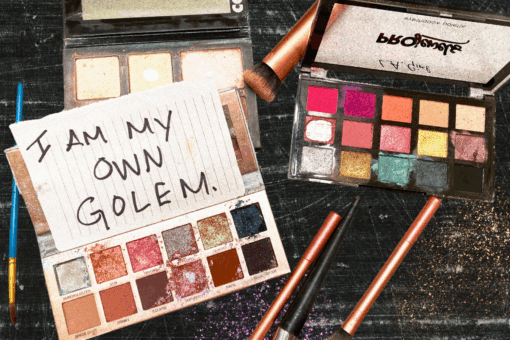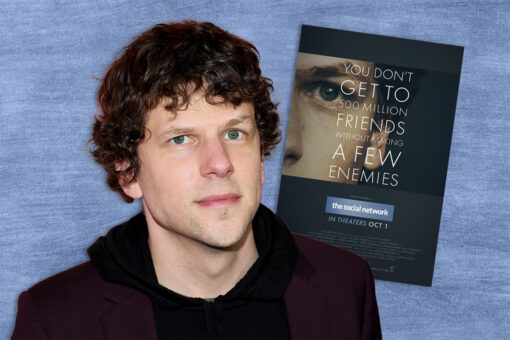The relationship between David and Jonathan in the Book of Samuel is the greatest love story found in the Tanakh (Hebrew Bible). Don’t believe me? Just read Pirkei Avot 5:16, where the rabbis refer to this relationship as “a love that did not depend on anything” and thereby a love “without cease.”
Despite the abundant textual evidence of a queer relationship between David and Jonathan — including King Saul openly accusing his son of sexual immorality in regards to David (1 Samuel 20:30) — the existence of this queerness has been consistently ignored and denied for thousands of years. Of course, queer people have always been able to identify queerness, and intentional references to the homoeroticism of this story have been found from as early as the 12th century CE. But it’s taken until the last century or so before mainstream writers and creators have been able to openly acknowledge this queerness and incorporate it into their work.
Rather than attempting to prove a queer relationship between David and Jonathan here — this has been done by many Jewish and secular scholars before — I instead want to highlight some recent creators who have been brave enough to depict that queerness in their work.
1. “David the King” by Gladys Schmitt
One of the earliest depictions of a queer relationship between David and Jonathan is in the novel “David the King” by Gladys Schmitt, published in 1946. At this time, “obscenity” was still illegal in the United States, and Schmitt would have been forced to take precautions to keep her work from being censored. The relationship she depicts is beautiful, but also very frustrating — although David and Jonathan are in love, they never formalize or consummate their relationship. They come close at one point, before Schmitt writes on page 69 that “the ancient admonition, the old, unalterable law came between them. Aching and baffled, they drew apart.” This is meant as a reference to Leviticus 18:22, which forbids a man from “lying with a male the lyings of a woman;” the meaning of this verse is hotly debated, but has historically been interpreted as a commandment forbidding sex between two men. Yet, in summoning the force of that prohibition, Schmitt makes it clear that David and Jonathan do harbor sexual desire towards one another, which they would otherwise act on if they did not believe it to be against the laws of the Torah. This story, though heartbreaking, feels so real: how many queer people throughout history have longed to fully express their love for each other, while knowing that the consequences of doing so could be dire?
2. “The Meeting of David and Jonathan” by John Addington Symonds
Another early queer(ish) adaptation of this story was published as early as 1878, in the poem “The Meeting of David and Jonathan” by John Addington Symonds in his book “Many Moods: A Volume of Verse.” While this poem is beautiful, heart-wrenching and very queer-coded, it is not as explicitly homoerotic as the other works on this list and could theoretically be interpreted as depicting a very intense friendship. After all, if you can straight-wash “your love was more wonderful to me than the love of women” (2 Samuel 1:26) then you can probably excuse “and in his arms of strength / He took David, and for sore love found at length / Solace in speech, and pressure, and the breath… In that kiss / Soul unto soul was knit and bliss to bliss” as somehow platonic (154). I’m choosing to highlight this work mainly because of the author: Symonds openly wrote about his positive views on homosexuality, and was discovered posthumously to have had non-platonic relationships with other men. With this background knowledge, it can be confidently inferred that he intended the kisses and embraces between David and Jonathan in his poem to be romantic.
3. “How are the Mighty Fallen” by Thomas Burnett Sean
The first openly, undeniably homosexual adaptation of David and Jonathan’s story didn’t appear until 1974, when novelist Thomas Burnett Sean published his fantasy retelling “How are the Mighty Fallen.” This is the earliest text I can find where David and Jonathan’s relationship is both romantic and sexual, openly and without judgment from the author, who was likely a queer man himself. At the time, “How are the Mighty Fallen” was still extremely controversial and was nearly banned from publication, in addition to receiving harsh criticism upon release. And even by my standards, Swann’s novel is very strange at times, mainly because he incorporates aspects of Greek mythology (such as making Jonathan a siren and Goliath a cyclops), as well as having some of the Israelite characters worship the Canaanite goddess Ashtoreth. Nonetheless, the relationship Swann depicts is so lovely and affirming. One of my favorite lines is from when the characters first have sex: “Jonathan held [David] with wild urgency, meeting mood for mood, making of touch a language more articulate than song…” (94).
4. “The Secret Chord” by Geraldine Brooks
Likely the most well-known work on this list is “The Secret Chord,” by celebrated author Geraldine Brooks (2015). She is also the only creator on this list who is Jewish, which is part of why her adaptation of the Book of Samuel is my favorite. Her David and Jonathan are fully devoted to each other; unlike in some other adaptations where David’s affections are split between Jonathan and Jonathan’s sister Michal, “The Secret Chord”’s David only agrees to marry Michal in order to become closer to Yonatan. After all, in a time without same-gender marriage, the closest connection one man could make with another was to become his brother-in-law (see the story of Rabbi Yohanan and Reish Lakish in the Babylonian Talmud, Tractate Bava Metzia 84a for another example). In this book, the queer nature of David and Jonathan’s relationship is also known — and even mostly affirmed — by the other characters, a necessity in a story told from neither David nor Jonathan’s point of view. While this could make the novel read as less historically accurate, it’s a welcome breath of fresh air to read about this queer relationship through the lens of acceptance and normalization.
5. “Beloved King: A Queer Bible Musical” by Jade Sylvan
Finally, the last adaptation on my list is also the only visual work. In May of 2020, I was lucky enough to attend a Zoom viewing party of “Beloved King: A Queer Bible Musical,” the capstone project of now-ordained Unitarian Universalist minister Jade Sylvan. Currently the musical can only be experienced through a selection of six songs available for streaming, a few photos and clips, or by reading the script, but is in the works to be staged in New York City in 2025. While the music and script are both excellent, they can’t match the feeling of seeing this story play out in front of you. This musical is groundbreaking for many reasons (not least because of the multiple, canonical, stripping scenes) but first and foremost as the only visual adaptation so far to explicitly portray a queer relationship between David and Jonathan. I like to read as much as the next person, but there is something altogether unique and affirming about seeing these two characters strip, kiss and embrace before your very eyes.
These aren’t the only adaptations that present David and Jonathan as explicitly queer: shoutout to “King David” by Allan Massie and especially “The Prince’s Psalm” by Eric Shaw Quinn. Truthfully, I don’t think I will ever get tired of rereading this story, no matter how many adaptations are published. Each is precious, unique and groundbreaking in its own way — though I’m still waiting for someone to write a version where Michal is a lesbian.



